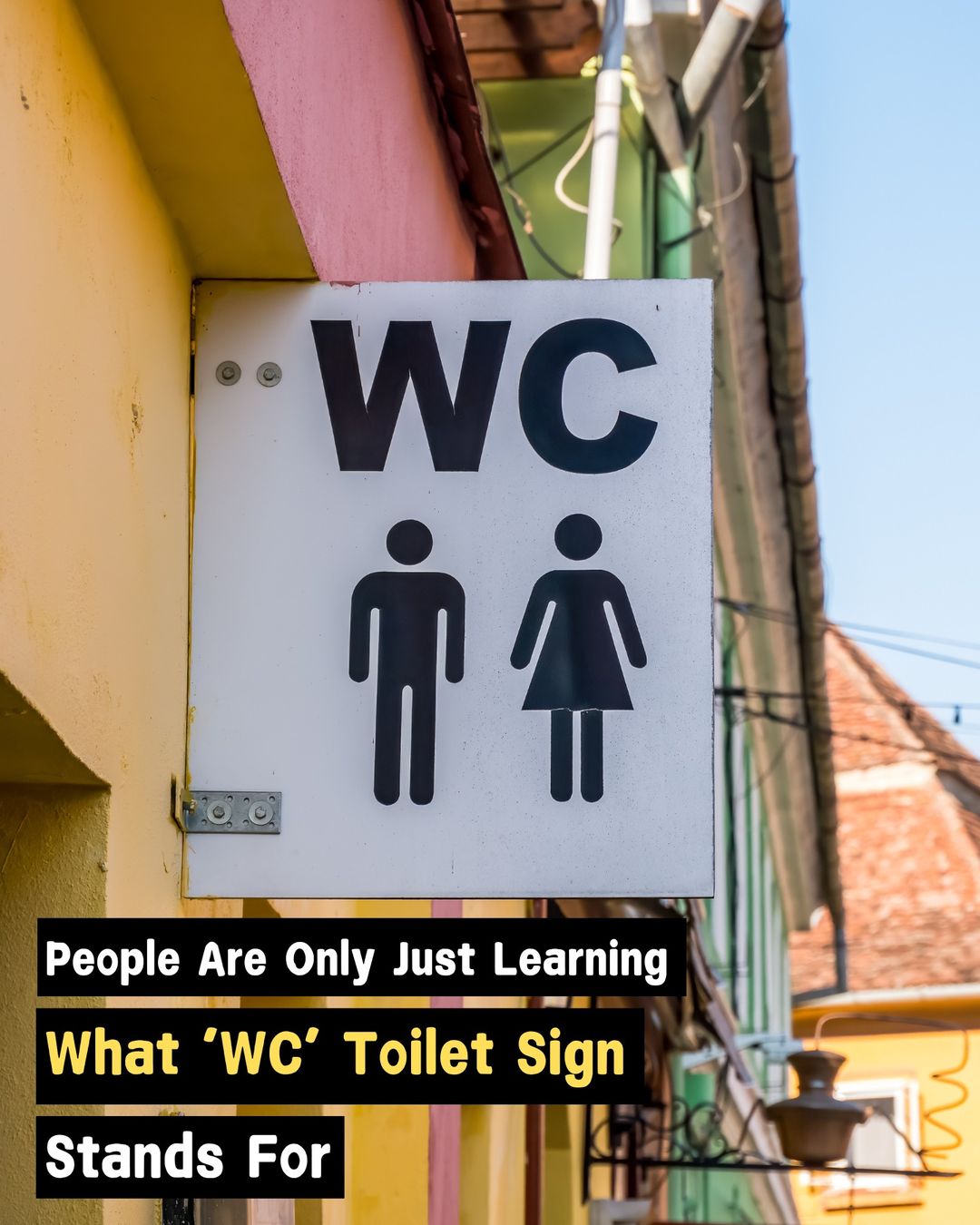We’ve all seen that little “WC” sign on public restroom doors, but have you ever wondered what those two letters actually stand for? It’s one of those everyday things we rarely question—like why pizzas come in square boxes or where those missing socks end up.

Today, we’re solving one of life’s little mysteries: what on earth does the “WC” sign on toilet doors mean?
While we’re all familiar with common abbreviations like LOL, WTF, and OMG, some acronyms still stump us. And WC seems to be one of those terms that makes people scratch their heads. You might have noticed it outside restrooms, but why do we use “WC” when we could just say “bathroom” or “restroom”?
It turns out that WC stands for “water closet,” and there’s a pretty interesting story behind why it was called that in the first place.
To understand it better, we need to look back to a time before indoor plumbing was a thing. Picture this: back in the day, people had to take a trip outside to an outhouse or use a chamber pot when nature called. But when indoor plumbing eventually made its way into homes, people had to figure out where to put the newfangled toilet. Homes already had rooms specifically for bathing—hence the name “bathroom”—but they needed a place to put the toilet that kept things somewhat private.
The solution? They installed the toilet in a small, closet-like space, and thus, the “water closet” was born. Essentially, it was a small room with running water—hence the name. The term stuck around, and over time it became abbreviated to “WC.”
This topic even made waves on TikTok after someone asked Nathan, a popular content creator known as @itsnathannyc, what WC means. Nathan explained in a video: “WC stands for ‘water closet.’ Back before indoor plumbing was a thing, you’d have a separate room for bathing—the bathroom. You’d have to carry water in with a bucket, heat it, and pour it into the bathtub. But when plumbing came indoors, they already had the bathroom, so the toilet was installed in a closet space, which became known as the water closet.”
Nathan added: “It was the one room in the house where there was running water specifically for the toilet, and that’s how the name stuck.”
This revelation left many TikTok users stunned. One person commented, “I’m glad someone asked this because I’ve been wondering for years but never actually Googled it.” Another admitted, “I never thought about it until now.” There was even someone who shared, “I was 23 years old when I learned what WC stands for.” And another said, “I can’t believe I’ve been seeing WC signs for years without knowing what it meant!”
If you’re a history buff, there’s an even deeper dive into how the humble water closet came about. According to Old House Online, in the 1870s, most people handled their business either by using a hole in the ground or a chamber pot. Back then, the word “toilet” actually referred to a dressing table or a washstand. It wasn’t until later that it became associated with the bathroom fixtures we know today.
The first flushing water closets appeared in the 1880s and were often made to look like familiar chamber pots. But as it turned out, using wood and water together wasn’t very practical (or sanitary). By the late 1880s, porcelain fixtures became popular, leading to the open-style plumbing systems we’re familiar with now.
Over time, the small, cramped water closets evolved into the spacious, modern bathrooms we enjoy today, complete with tiled floors and separate showers. But despite these upgrades, the term “water closet” remained—and that’s why those two letters still appear on restroom signs around the world.
So, the next time you see a “WC” sign, you can impress your friends with the story behind it. Who knew that a simple sign could have such an interesting history?
You really do learn something new every day, don’t you?





